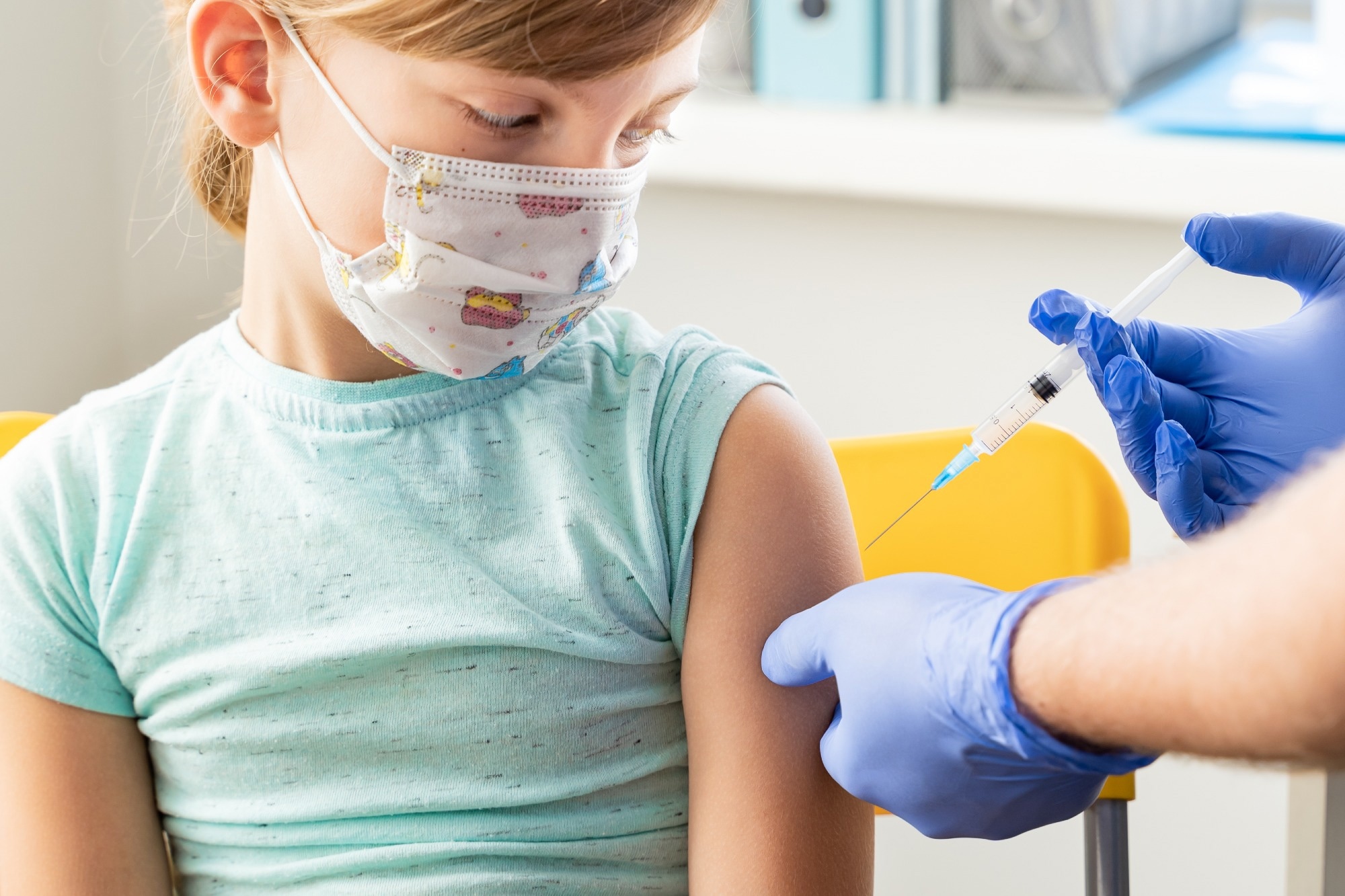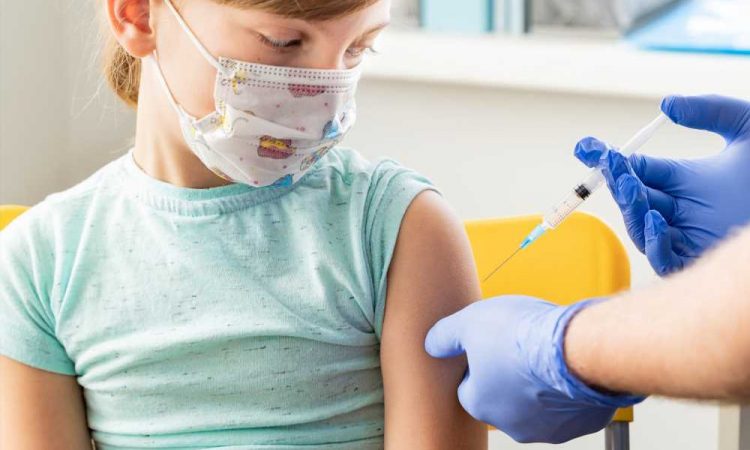In a recent Morbidity and Mortality Weekly Report (MMWR) published on the United States Center for Disease Control and Prevention (US-CDC) website, researchers published the effects of a homologous booster dose of the BNT162b2 coronavirus disease 2019 (COVID-19) vaccine in children aged five to 11 years.

Background
The CDC and the Food and Drug Administration (FDA) continually monitor vaccine safety to provide updates to guide COVID-19 vaccination recommendations.
About the study
In the present study, researchers used data from the vaccine adverse event reporting system (VAERS) and v-safe, a voluntary smartphone-based safety surveillance system, to analyze the effect of booster doses of BNT162b2 in US children aged five to 11 years between May 17 and July 31, 2022.
The v-safe platform allows parents and guardians of all children under 15 years to report receipt of all doses of a COVID-19 vaccine and all other relevant information. The CDC staff at v-safe call centers encourage parents/guardians seeking medical care after COVID-19 vaccination to complete a VAERS report.
VAERS, a passive vaccine safety surveillance system in the US, is co-managed by the CDC and FDA. VAERS documents all adverse events after COVID-19 vaccination reported by health care providers, vaccine manufacturers, and the public. VAERS reports for children aged five to 11 classified an event as serious and non-serious based on demographic characteristics and MedDRA preferred terms (PTs).
Finally, the researchers presented the odds of reporting an adverse reaction following booster vaccination and the primary vaccination series and compared them using multivariable generalized estimating equations models.
Study findings
During the study period, around 657,302 US children in the five-to-11-years age group received a booster dose of BNT1262b. Of these, v-safe documented 3249 BNT162b2 booster doses, and VAERS received 581 reports of adverse events after receipt of a booster for children aged five to 11 years. In v-safe data, local and systemic reactions occurred at a similar frequency following the second and third dose; however, some reactions, such as pain (moderate to severe), occurred more frequently after the booster vaccination.
As per v-safe data, the authors noted a higher frequency of 'inability to complete daily chores' after the booster dose than the second dose (12.1% vs. 7.5%). Conversely, they observed a lesser frequency of 'inability to attend school' following the booster dose than after the second vaccine dose (6.9% vs. 10.0%). Around 1% of parents/guardians reported seeking medical care for their child after booster vaccination, as per v-safe reports.
Around 99% of VAERS reports were non-serious, such as fever, pain in extremity, and fatigue in 7.8%, 6.6%, and 4.8% of cases, respectively. Also, the authors noted that vaccine administration errors were the most common adverse events in VAERS reports. However, no adverse health event accompanied most such events.
Further, a small percentage of VAERS reports were serious, barely 0.5%; yet, there were no reports of myocarditis or death in the children. Accordingly, there was a single case of new-onset type 1 diabetes for ten days, facial swelling for three days, and pain, fatigue, and malaise five days after vaccination requiring hospitalization.
Moreover, the risk for myocarditis after the third dose (booster) was approximately one-third of that reported after the second dose and just about 15.3 per million doses.
Overall preliminary safety findings were consistent with the clinical trial reports. Notably, children aged five-to-11 years were the first to receive 10 μg or 0.2 mL of an mRNA vaccine (the recommended dosage for individuals ≥12 years is 30 μg or 0.3 mL. Thus, healthcare staff must be aware of the vaccine dosing for children to help reduce vaccine administration errors. It is also noteworthy that the FDA recommended the emergency use authorization (EUA) for BNT162b2 in children aged five to 11 years after five months following the second primary series dose based on a clinical trial conducted among 401 children of the same age group.
Conclusions
COVID-19 vaccination remains the most effective intervention strategy against severe illness and death due to COVID-19. The current study findings shed light on the effectiveness of the homologous booster dose of BNT1262b in children aged five to 11 years. The study findings revealed that while parents should expect local and systemic reactions among children in the first week following booster vaccination, reports of serious adverse events are rare.
Accordingly, the advisory committee on immunization practices recommends that all children aged five to 11 years should receive one booster dose after five months of completing the primary vaccination series. However, immunocompromised children can receive a three-dose primary series with a gap of four weeks between the third and second dose, followed by a booster dose three months later.
- Hause AM, Baggs J, Marquez P, et al. (2022). Safety Monitoring of Pfizer-BioNTech COVID-19 Vaccine Booster Doses Among Children Aged 5–11 Years — United States, May 17–July 31, 2022. Morbidity and Mortality Weekly Report (MMWR). doi: http://dx.doi.org/10.15585/mmwr.mm7133a3 https://www.cdc.gov/mmwr/volumes/71/wr/mm7133a3.htm?s_cid=mm7133a3_w
Posted in: Medical Science News | Medical Research News | Disease/Infection News
Tags: Children, Clinical Trial, Coronavirus, Coronavirus Disease COVID-19, covid-19, Diabetes, Fatigue, Fever, Food, Frequency, Health Care, Healthcare, Homologous, Immunization, Mortality, Myocarditis, Pain, Type 1 Diabetes, Vaccine

Written by
Neha Mathur
Neha is a digital marketing professional based in Gurugram, India. She has a Master’s degree from the University of Rajasthan with a specialization in Biotechnology in 2008. She has experience in pre-clinical research as part of her research project in The Department of Toxicology at the prestigious Central Drug Research Institute (CDRI), Lucknow, India. She also holds a certification in C++ programming.
Source: Read Full Article
